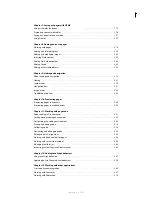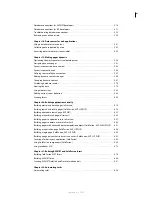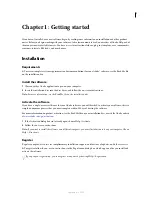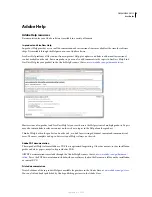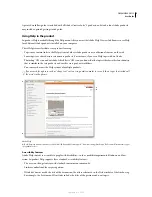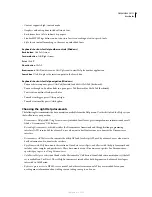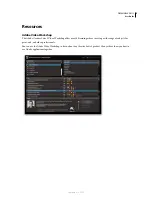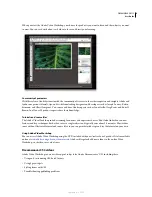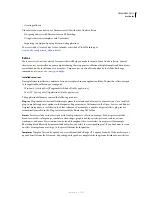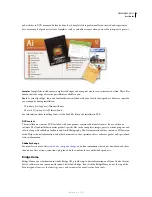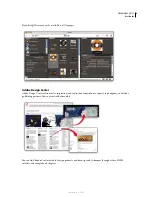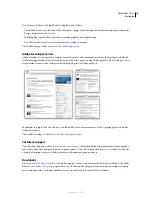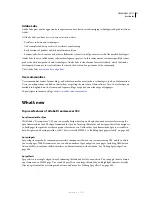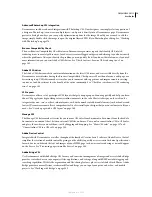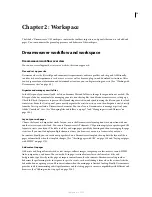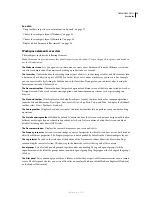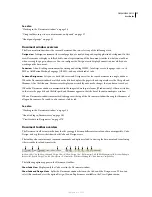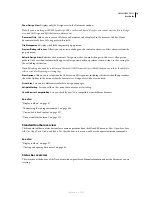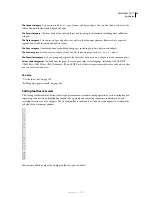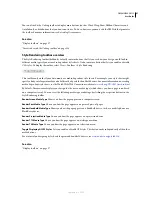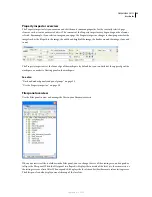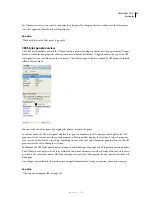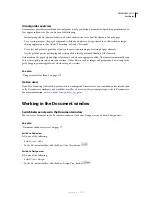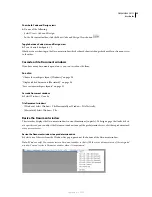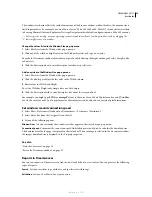
DREAMWEAVER CS3
User Guide
11
Adobe Labs
Adobe Labs gives you the opportunity to experience and evaluate new and emerging technologies and products from
Adobe.
At Adobe Labs, you have access to resources such as these:
•
Prerelease software and technologies
•
Code samples and best practices to accelerate your learning
•
Early versions of product and technical documentation
•
Forums, wiki-based content, and other collaborative resources to help you interact with like-minded developers
Adobe Labs fosters a collaborative software development process. In this environment, customers quickly become
productive with new products and technologies. Adobe Labs is also a forum for early feedback, which the Adobe
development teams use to create software that meets the needs and expectations of the community.
Visit Adobe Labs at
www.adobe.com/go/labs
.
User communities
User communities feature forums, blogs, and other avenues for users to share technologies, tools, and information.
Users can ask questions and find out how others are getting the most out of their software. User-to-user forums are
available in English, French, German, and Japanese; blogs are posted in a wide range of languages.
To participate in forums or blogs, visit
www.adobe.com/communities
.
What’s new
Top new features of Adobe Dreamweaver CS3
Spry framework for Ajax
With Adobe® Dreamweaver® CS3, you can visually design, develop, and deploy dynamic user interfaces using the
Spry framework for Ajax. The Spry framework for Ajax is a JavaScript library for web designers that allows designers
to build pages that provide a richer experience for their users. Unlike other Ajax frameworks, Spry is accessible to
both designers and developers alike, as 99% of it is actually HTML. See “Building Spry pages visually” on page 449.
Spry widgets
Spry widgets are prebuilt, common user interface components that you can customize using CSS, and then add to
your web pages. With Dreamweaver, you can add a number of Spry widgets to your pages, including XML-driven
lists and tables, accordions, tabbed interfaces, and form elements with validation. See “Adding Spry widgets” on
page 449.
Spry effects
Spry effects are a simple, elegant way of enhancing the look and feel of your website. You can apply them to almost
any element on an HTML page. You can add Spry effects to enlarge, shrink, fade, and highlight elements; visually
alter a page element for a certain period of time; and more. See “Adding Spry effects” on page 486.
September 4, 2007

